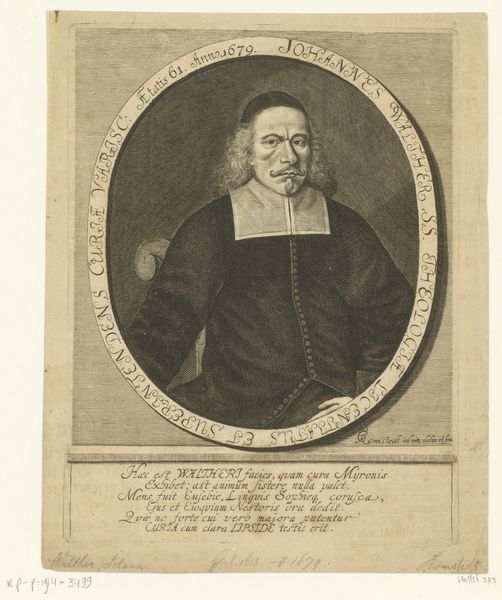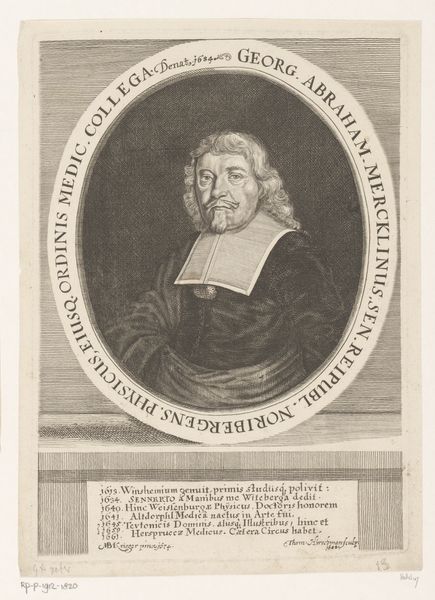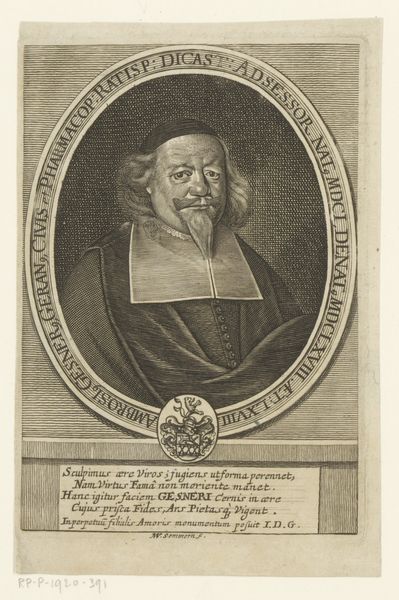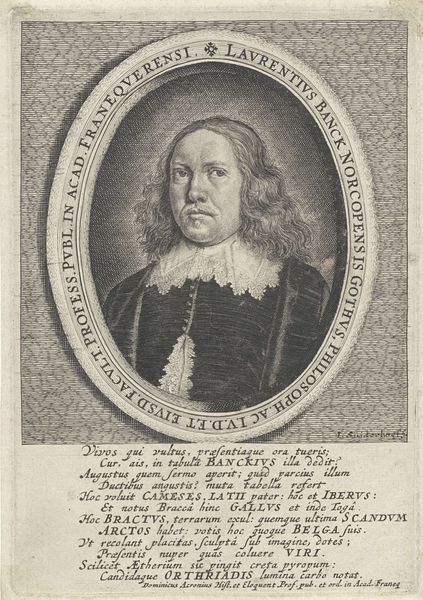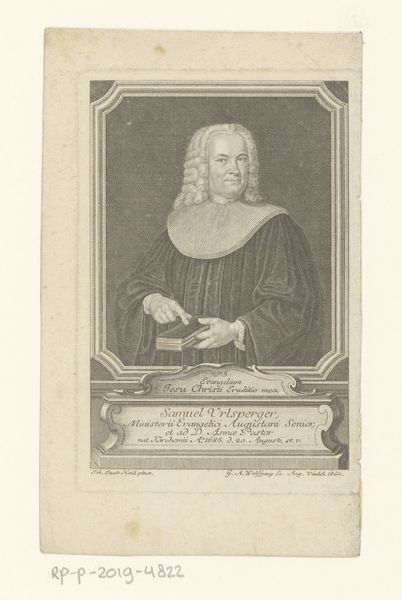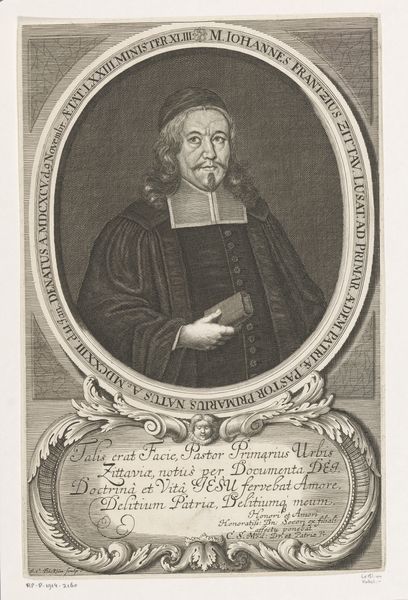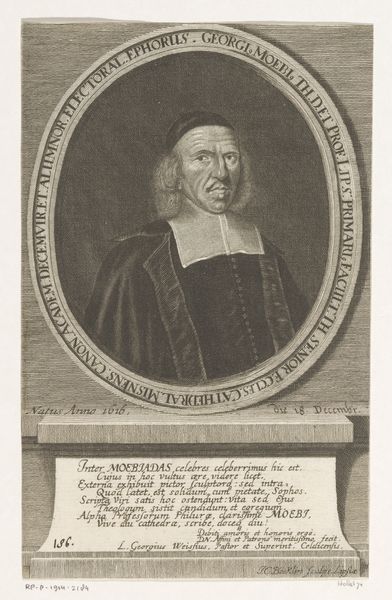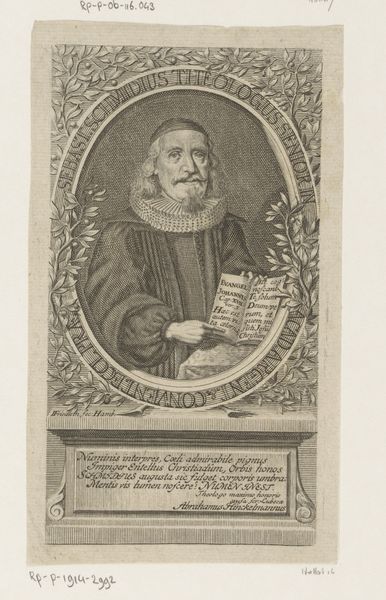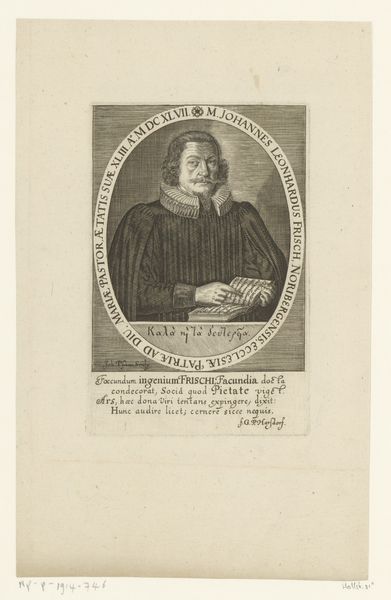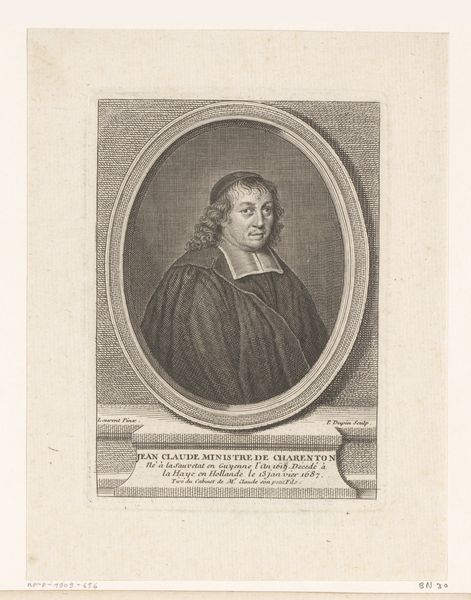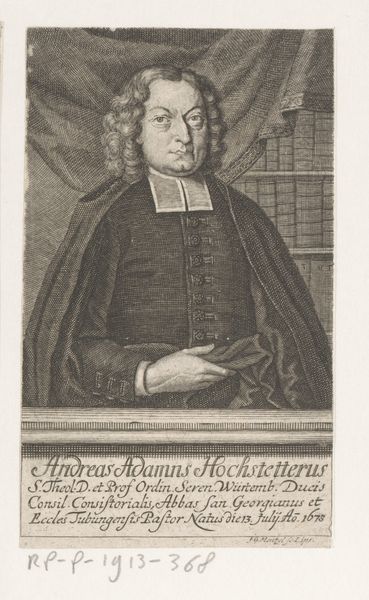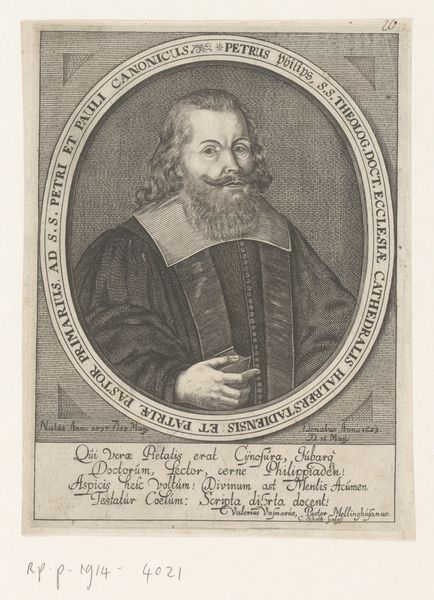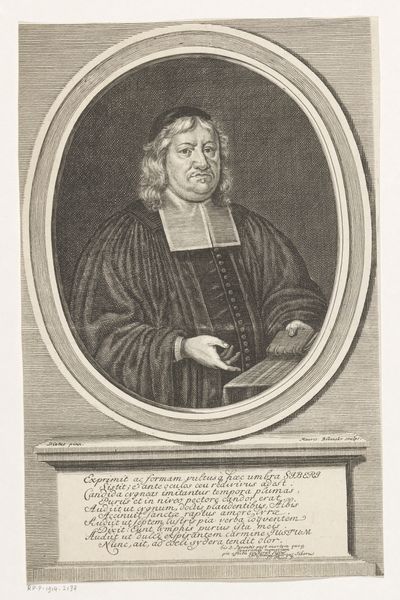
engraving
#
portrait
#
baroque
#
old engraving style
#
history-painting
#
engraving
Dimensions: height 114 mm, width 48 mm
Copyright: Rijks Museum: Open Domain
Curator: This engraving offers us a portrait of Johann Sebastian Mitternacht by Christian Romstet, created sometime between 1665 and 1721. What are your initial thoughts? Editor: Stark. The fine lines creating shadows give the sitter a slightly severe countenance. The whole composition feels very precise and controlled. Curator: Indeed. Engravings like this often served a dual purpose: circulating an image of the sitter but also projecting certain status. Mitternacht was a theologian, so this image would reinforce his intellectual position. Note the Latin inscription and the formal attire. Editor: I’m curious about the act of engraving itself. Consider the labor invested, the meticulous carving into the metal plate, and the final print. How many impressions were made? How widely did Romstet's work disseminate the image and ideas associated with Mitternacht? Was Romstet paid for this by Mitternacht? Curator: These are important questions. The medium inherently dictated reach; engravings allowed for broader dissemination of images compared to unique paintings. As to commission, these details get difficult to unearth. What we can examine, are the established systems of patronage, religious and secular. And how Romstet's technical choices might elevate the social standing of his subjects. Editor: Looking closer at those choices, I see the oval frame, the Latin text above, even the depiction of stone below, contribute to the overall effect of authority, constructing the public persona in line with his religious function and erudition. How would contemporary audiences have interpreted such established codes? Curator: The audiences would recognize the visual cues immediately; the baroque period relished in rhetorical display. His presentation conformed to, and reaffirmed, a certain societal order, one steeped in faith and hierarchy. Editor: Right, by dissecting the making of the image—the intentional design, materials, and printing—we peel back layers of the culture that shaped both artist and subject. Curator: Precisely! Examining Romstet’s artistic decisions, we illuminate the strategies people used to project influence within their community and beyond. It truly becomes a historical artifact with much to tell!
Comments
No comments
Be the first to comment and join the conversation on the ultimate creative platform.
